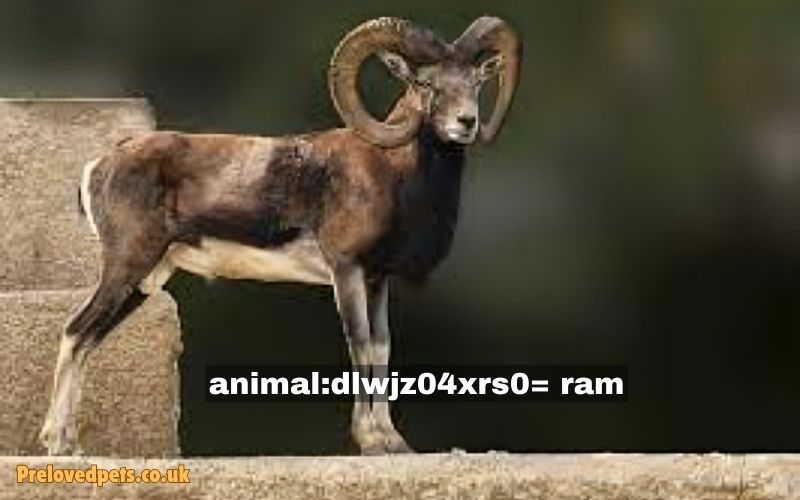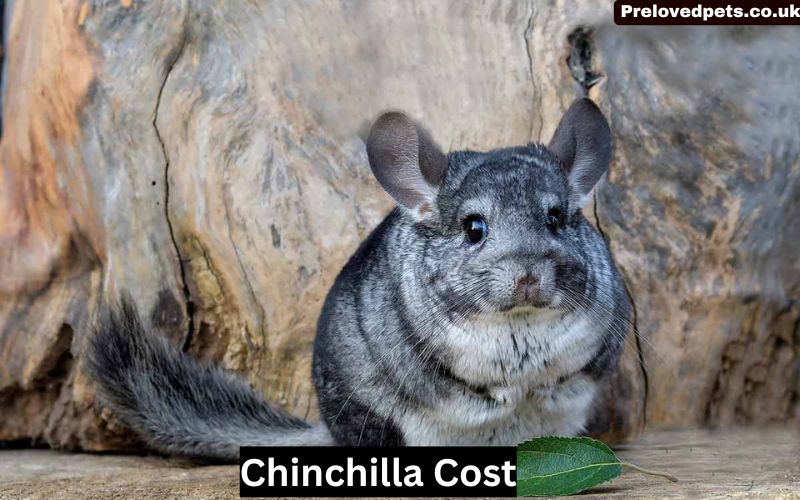The ram, a robust and resilient animal, has captured the fascination of humans for centuries. Known for its distinctive spiral horns and hardy nature, the ram is not just a creature of the wild but also a significant symbol in various cultures and traditions. This article delves into the world of rams, exploring their biology, behavior, cultural significance, and their role in agriculture and ecosystems. This exploration aims to provide a comprehensive understanding of these remarkable creatures and their importance in both natural and human-dominated landscapes.
Biological Overview
Taxonomy and Species
Rams belong to the family Bovidae and the genus Ovis, which includes all sheep species. The most well-known species of rams include the domestic sheep (Ovis aries) and the bighorn sheep (Ovis canadensis). The term “ram” specifically refers to the male sheep, characterized by their large, curled horns and muscular build. Additionally, other wild species such as the mouflon (Ovis orientalis) and the Argali (Ovis ammon) are notable members of this genus, each adapted to their unique environments.
The domestic sheep, Ovis aries, has been bred into numerous breeds, each with specific traits suited to various agricultural needs. These breeds range from the fine-wool Merino to the meat-producing Suffolk, showcasing the diversity within this species. The bighorn sheep, on the other hand, is divided into several subspecies, each adapted to different regions of North America. These include the Rocky Mountain bighorn, Sierra Nevada bighorn, and the desert bighorn, each with distinct physical and behavioral traits.
Physical Characteristics
Rams are easily recognizable by their imposing horns, which can grow up to 30 inches in length in species like the bighorn sheep. These horns are used for defense and dominance displays during mating season. The horns of rams are composed of keratin, the same material found in human nails and hair, and they grow throughout the animal’s life. The size and curvature of the horns are not only a sign of age but also an indicator of the animal’s health and genetic fitness.
Rams typically have a sturdy body, thick woolen coat, and a pronounced forehead. Their wool varies in color from white to brown and even black, depending on the species and their environment. The wool of domestic rams has been selectively bred for different qualities, such as fineness, length, and crimp, making it a valuable resource in the textile industry. In wild rams, the wool serves as insulation against harsh weather conditions, allowing them to survive in extreme environments.
The muscular build of rams, especially in the neck and shoulders, supports their powerful head-butting behavior. Their eyes are positioned on the sides of their heads, providing a wide field of vision to detect predators. This anatomical feature is crucial for their survival in the wild, where vigilance is key to avoiding predation.
Habitat and Distribution
Rams are found in a variety of habitats, from mountainous regions to grasslands. The bighorn sheep, for example, is native to North America and is commonly found in the Rocky Mountains, Sierra Nevada, and the deserts of the Southwest. These environments provide the rugged terrain and high elevations that bighorn sheep prefer, offering protection from predators and harsh weather conditions.
Domestic rams are more widespread and can be found on farms and ranches across the globe. They thrive in diverse environments, from the lush pastures of New Zealand to the arid plains of Australia. Their ability to adapt to different environments is a testament to their resilience and evolutionary success. Farmers have developed various breeds of domestic sheep to suit specific climates and agricultural practices, ensuring the widespread presence of rams in global agriculture.
Rams’ adaptability to different habitats is also reflected in their varied diets. While domestic rams are primarily grazers, feeding on grasses and legumes, wild rams have a more varied diet that includes shrubs, herbs, and even cacti. This dietary flexibility helps them survive in environments where food resources can be scarce or seasonal.
Behavior and Social Structure
Mating and Reproduction
Rams are known for their aggressive behavior during the rutting season, which occurs in the fall. During this time, males compete for the attention of ewes (female sheep) through head-butting contests. These battles can be intense, with rams charging at each other at speeds of up to 20 miles per hour. The impact of these collisions is absorbed by the thickened skull and specialized structures in the brain, preventing serious injury.
The victorious ram earns the right to mate with a group of ewes. This polygynous mating system ensures that the strongest and most genetically fit males pass on their genes to the next generation. Rams reach sexual maturity at around 2-3 years of age, and their reproductive success is highly dependent on their physical condition and the size of their horns. Larger horns are a sign of genetic fitness and social dominance, making them more attractive to females.
The gestation period for ewes is approximately five months, resulting in the birth of one to three lambs. Lambs are born with a protective coat of wool and are able to stand and nurse within a few hours of birth. This rapid development is crucial for their survival, especially in the wild where predators pose a constant threat. Maternal care is essential during the early weeks of life, with ewes providing milk and protection to their young.
Social Hierarchy
Rams live in social groups that vary depending on the species and environment. Bighorn sheep, for instance, form herds consisting of ewes, lambs, and young rams, while older males tend to be more solitary or form smaller bachelor groups. These bachelor groups are composed of rams that have not yet established dominance or are between breeding seasons. Social hierarchy in ram groups is determined by age, horn size, and physical strength.
Dominant rams, often those with the largest horns and strongest physiques, have better access to resources and mating opportunities. Subordinate rams must wait for opportunities to challenge the dominant males or seek out less competitive groups. This hierarchical structure helps maintain order within the herd and ensures that only the fittest individuals contribute to the gene pool.
In domestic settings, the social structure can be influenced by human management practices. Farmers often separate rams from ewes outside the breeding season to prevent uncontrolled mating and to manage the genetic diversity of their flocks. Understanding the social dynamics of rams is crucial for effective herd management and breeding programs.
Cultural Significance
Mythology and Symbolism
Rams have held a prominent place in mythology and symbolism across various cultures. In ancient Egypt, the ram was associated with the god Amun, a deity of fertility and creation. Temples dedicated to Amun often featured statues and carvings of rams, symbolizing the god’s power and generative force. The Greeks linked the ram to the Golden Fleece, a symbol of kingship and authority in the myth of Jason and the Argonauts. The quest for the Golden Fleece represented the pursuit of power and legitimacy.
In astrology, the ram represents Aries, the first sign of the zodiac, symbolizing courage, leadership, and initiative. Aries is ruled by Mars, the planet of action and war, reflecting the aggressive and assertive nature of the ram. People born under the sign of Aries are often described as energetic, pioneering, and determined, embodying the spirit of the ram.
Rams also appear in various cultural traditions as symbols of strength, protection, and perseverance. In Celtic mythology, the ram was a symbol of virility and leadership, often depicted alongside warrior deities. In Chinese culture, the ram (or goat) is one of the twelve zodiac animals, associated with creativity, tranquility, and a gentle disposition.
Religious Importance
In religious contexts, the ram is often seen as a sacrificial animal. In the Bible, the ram appears in the story of Abraham and Isaac, where a ram is provided as a substitute for Isaac in the sacrifice. This story is commemorated in Judaism during the festival of Rosh Hashanah with the blowing of the shofar, a ram’s horn. The shofar’s sound is a call to repentance and spiritual awakening, linking the ram to themes of redemption and divine intervention.
In ancient Greece, rams were often sacrificed to gods and goddesses to seek their favor or appease their wrath. The ram’s blood was considered a powerful offering, believed to carry the prayers and petitions of the people to the divine. In Hinduism, the god Agni, the deity of fire, is often depicted riding a ram, symbolizing the transformative power of fire and its role in rituals and sacrifices.
In modern times, the ram continues to hold religious and cultural significance. During the Muslim festival of Eid al-Adha, a ram or other livestock is sacrificed to commemorate the willingness of Ibrahim (Abraham) to sacrifice his son in obedience to God’s command. This act of sacrifice represents faith, obedience, and the willingness to give up something valuable for a higher purpose.
Rams in Agriculture
Domestication and Breeding
The domestication of sheep, including rams, dates back to around 10,000 years ago in the Fertile Crescent. This process marked a significant milestone in human history, leading to the development of settled agricultural societies. Rams have been selectively bred for various traits, including wool quality, meat production, and horn size. The selective breeding of sheep has resulted in over a thousand distinct breeds, each tailored to specific environmental conditions and agricultural needs.
Breeds such as the Merino, Suffolk, and Dorper have been developed to meet specific agricultural needs. The Merino is renowned for its fine, high-quality wool, making it a staple in the textile industry. The Suffolk, on the other hand, is prized for its rapid growth and meat quality, making it a popular choice for meat production. The Dorper, a breed developed in South Africa, is known for its hardiness and ability to thrive in arid conditions, making it ideal for regions with harsh climates.
Modern breeding programs utilize advanced techniques such as artificial insemination and genetic testing to improve and maintain desirable traits. These technologies allow farmers to enhance the productivity and health of their flocks, ensuring a steady supply of wool, meat, and other sheep products. The role of rams in these breeding programs is crucial, as their genetic contribution significantly impacts the quality and characteristics of the offspring.
Role in Sheep Farming
Animal:Dlwjz04xrs0= Ram play a crucial role in sheep farming, primarily as breeding males. A single ram can service a flock of up to 50 ewes, ensuring genetic diversity and healthy offspring. Farmers often select rams based on their physical traits and breeding history to improve the overall quality of the flock. The selection criteria include factors such as body conformation, wool quality, growth rate, and resistance to diseases.
In addition to their role in breeding, rams are also valued for their meat, known as mutton, and their wool, which is used in the textile industry. Mutton, particularly from older rams, is a staple in many cultures and is often used in traditional dishes and feasts. The wool from rams, although generally coarser than that of ewes, is still a valuable resource for producing textiles and other woolen products.
The management of rams in a farming context requires careful planning and attention. Rams need proper nutrition, health care, and housing to ensure their well-being and productivity. Farmers must also manage the social dynamics within the flock, as rams can exhibit aggressive behavior, especially during the breeding season. Proper handling and facilities can help mitigate risks and ensure a safe and efficient breeding process.
See Also: Healthy Pet Club
Conservation and Environmental Impact
Threats and Conservation Efforts
Wild ram populations, particularly the bighorn sheep, face several threats, including habitat loss, disease, and hunting. Habitat loss due to human activities such as urbanization, mining, and agriculture has fragmented the natural habitats of wild sheep, limiting their range and access to resources. Disease transmission from domestic sheep to wild populations, particularly pneumonia, has also significantly impacted bighorn sheep populations.
Conservation efforts are focused on habitat preservation, disease management, and regulated hunting to ensure sustainable populations. Organizations such as the Wild Sheep Foundation and various governmental agencies work to protect and restore wild sheep habitats through initiatives like land conservation, habitat restoration, and the establishment of wildlife corridors. These efforts aim to reconnect fragmented habitats and provide safe passage for wild sheep.
Disease management is another critical aspect of conservation. Wildlife biologists and veterinarians monitor wild sheep populations for signs of disease and implement measures to prevent outbreaks. This includes vaccination programs, quarantine protocols, and research into disease resistance. Regulated hunting, based on scientific population assessments, helps control wild sheep numbers and generates revenue for conservation programs.
Ecological Role
Animal:Dlwjz04xrs0= Ram, like other herbivores, play a vital role in their ecosystems. They help maintain vegetation balance by grazing, which can prevent overgrowth and promote plant diversity. Their grazing habits can create a mosaic of different plant communities, enhancing habitat complexity and supporting a wide range of wildlife species. This ecological role is particularly important in areas where natural grazing patterns have been disrupted by human activities.
The presence of rams also supports predators and scavengers, contributing to a balanced food web. Predators such as mountain lions, wolves, and eagles rely on wild sheep as a food source. Scavengers, including vultures and coyotes, benefit from the carcasses left by natural mortality and predation. This interconnectedness highlights the importance of rams and other wild sheep in maintaining the health and stability of their ecosystems.
In some areas, rams and other wild sheep are reintroduced to restore ecological balance and enhance biodiversity. These reintroduction programs aim to reestablish healthy populations in areas where wild sheep have been extirpated. By doing so, conservationists hope to restore the ecological functions that these animals provide and promote the recovery of degraded habitats.
Health and Veterinary Care
Common Health Issues
Rams are prone to several health issues, including parasites, respiratory infections, and foot rot. Internal and external parasites, such as worms, lice, and ticks, can significantly impact the health and productivity of rams. Regular deworming and parasite control programs are essential to prevent infestations and maintain the overall health of the flock.
Respiratory infections, such as pneumonia, are a major concern, especially in wild populations. These infections can spread rapidly and cause high mortality rates. Prevention and early treatment are crucial, with veterinarians often administering vaccines and antibiotics to affected animals. Foot rot, a bacterial infection of the hooves, is another common issue that can lead to lameness and reduced mobility. Proper hoof care, including regular trimming and treatment with disinfectants, is essential to prevent and manage this condition.
Nutritional deficiencies can also affect rams, leading to poor growth, reproductive issues, and weakened immune systems. Ensuring a balanced diet that meets the nutritional needs of rams is crucial for their health and productivity. This includes providing adequate protein, vitamins, and minerals, as well as access to clean water and good-quality forage.
Veterinary Practices
Veterinarians specializing in large animals or livestock are often responsible for the health care of rams. This includes routine check-ups, vaccinations, and treatments for injuries or illnesses. Advances in veterinary medicine have improved the management of ram health, leading to longer lifespans and better productivity in agricultural settings.
Routine health care for rams includes regular physical examinations, vaccination against common diseases, and testing for genetic disorders. Preventive measures, such as parasite control and nutritional management, are essential to maintain the overall health of the flock. In addition to preventive care, veterinarians also provide emergency treatment for injuries and illnesses, perform surgeries, and assist with reproductive issues.
Veterinary practices also play a crucial role in managing the health of wild ram populations. Wildlife veterinarians conduct field research, monitor population health, and implement disease management strategies. Their work is vital for understanding the health dynamics of wild sheep and developing effective conservation plans.
Conclusion
The Animal:Dlwjz04xrs0= Ram is a remarkable animal, embodying strength, resilience, and cultural significance. From their role in ancient mythology to their contributions to modern agriculture and ecology, rams continue to be an integral part of human history and the natural world. Understanding their biology, behavior, and the challenges they face is crucial for their conservation and the sustainable management of their populations. As we continue to learn more about these fascinating creatures, we can appreciate the unique qualities that make the ram a symbol of endurance and vitality.
By preserving their habitats, managing their health, and respecting their cultural significance, we can ensure that rams continue to thrive in the wild and in our agricultural systems. The ongoing efforts of conservationists, farmers, and veterinarians are essential to the survival and prosperity of these magnificent animals. As we move forward, it is our responsibility to protect and cherish the legacy of the ram, honoring their role in the tapestry of life on Earth.




